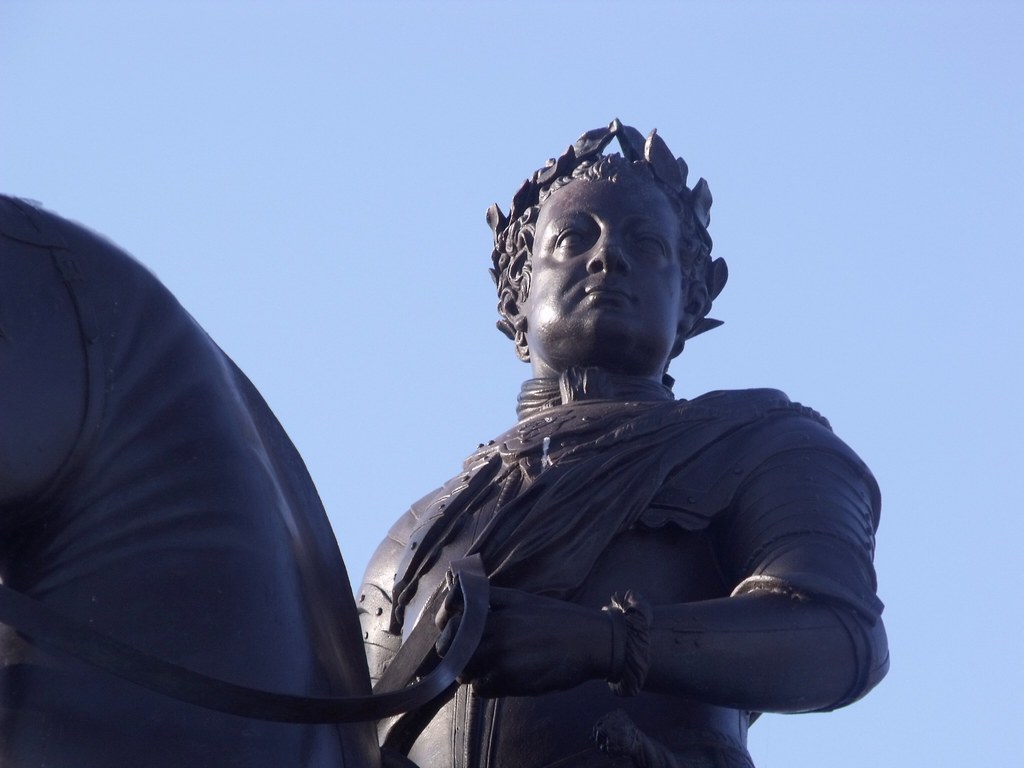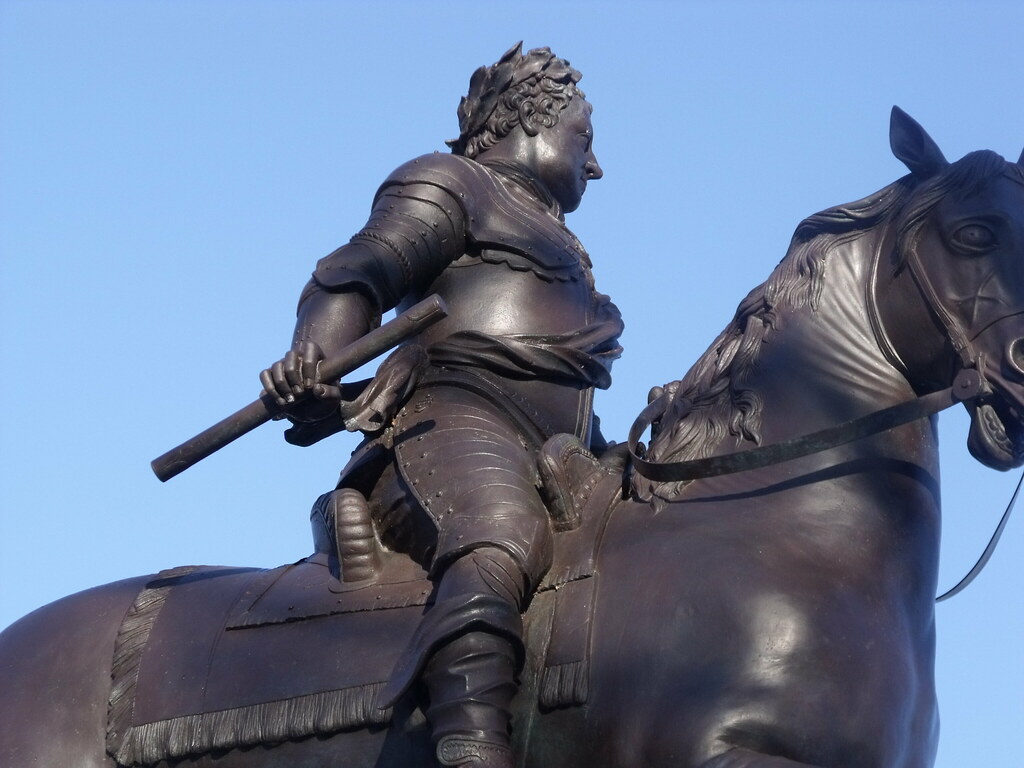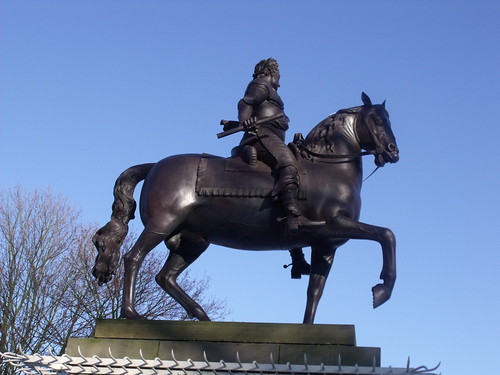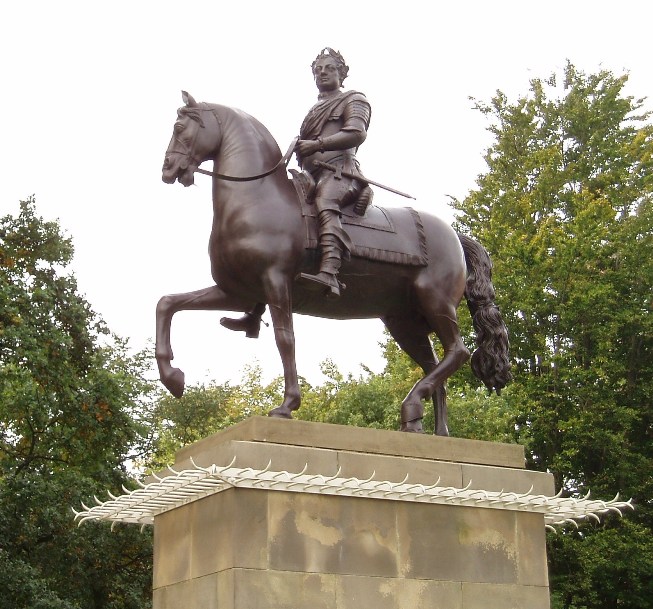The Equestrian Statue of George I.
Wearing Modern Armour.
Holding a Baton.
John van Nost.
1717 - 1722.
Formerly on the Essex Bridge, Dublin.
Now at the Barber Institute.
University of Birmingham.






Originally placed on the Essex (now Grattan) bridge, Dublin.
Commissioned by the City of Dublin in 1717.
"
a grateful acknowledgement of the many favours
conferred on this city by his present majesty King George”.
This memorial statue to George I was commissioned by a
committee of the Dublin Assembly in 1717, probably by John van Nost the Elder,
who had made at least five other equestrian statues of him.
The horse is a direct copy of the horse on the equestrian of the 1633 statue Charles I by Hubert le Sueur at Charing Cross. A document which was published at the end of the 19th century confirmed that John Nost II benefited from a special authorisation to copy the Charing Cross horse for his own statue of George I ' On 15 June 1719a warrant was issued, at the request of the Lord Mayor and magistrates of Dublin, giving leave to Mr John Hoest (sic), statuary to take a model of the horse at Charing Cross, they intending to place his majesty, on horse back in their city. It is an almost exact copy with only a variation in the detail of the tail
This work was
unveiled on a pier of Essex (now Gratton) Bridge in Dublin on 1st August 1722
amidst great celebrations. A ticket to the celebration cost £6.
The Essex Bridge was rebuilt in 1755 and the statue was removed. It first went into storage at what had been Lord Longford's House in Aungier Street. Interestingly John Nost III was leasing 22 Aungier Street and had his stone yard here at the time. 22 Aungier Street was built by Sir A King Brass founder and Lord Mayor.
see -
S.
O'Connell, 'The Nosts: a revision of the family history', Burlington
Magazine 129, December 1987, 802-6
The Aungier Street information quoted in Dublin the City within the Grand and Royal Canals ....
Christine Casey, Yale 2005.
For Aungier Street see - https://issuu.com/scoyne73/docs/aunger_st._15.2.13_entire
In 1798 it was re erected in the grounds of the Dublin Mansion House in Dawson Street where it remained until it was sold in 1937.
It was bought by Thomas Bodkin, first director of the Barber Institute, and a former director of the National Gallery of Ireland for £500 and installed at The Barber Institute in 1937
see Nost's Equestrian George I Restored.
Cropped and enlarged from the Engraving by Parr after Joseph Tudor
c.1750, showing the Customs House, Essex Bridge and Statue of George I now at the Barber Institute

A Prospect of the Custom House and Essex Bridge,
Dublin / Prospect von Dublin, bis au der Brücke D'Essex A. L. Wirsing exudit
Norimberg by Adam Ludwig Wirsing (1733 or 1734-1797)
Copper-plate engraving by A. L. [Adam Ludwig]
Wirsing (1733 or 1734-1797; copied from an image by artist Joseph Tudor,
engraved by Parr that was published in 1753 as No. 4 of a series of Six
Views [of Dublin] with Wirsing’s own alterations and additions
________________________________

Equestrian Statue of George I
Engraving: Dublin Penny Journal Vol.
4, 5th December 1835 p. 184



No comments:
Post a Comment